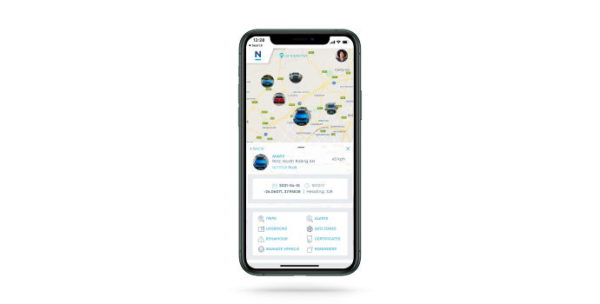Arrive Alive stresses the importance of a safety-first approach when it comes to your fleet vehicles and drivers can never be over-emphasised. Protecting these vital parts of your operation can sometimes mean the difference between a thriving business or going out of business.
However, owner-operators or those well-versed in the complexities of running a business, don’t have the luxury of focussing on just one thing. Enter the fleet management system.
For many years, the value of employing a fleet management system has been proven again and again – with the data it collects ensuring more informed decision-making, a more efficient & cost-effective operation, and also a much safer one.
Key functions of a fleet management system
At its core, a fleet management system consists of a GPS-enabled telematics device that collects data about both the vehicle and driver.
Vehicle data includes:
- GPS location
- Speed
- Ignition status
- Historical trips
- Service intervals & licencing
- Battery tampering
- Accident/impact detection
- Signal jamming detection
Driver data includes:
- Driver identification
- Driver behaviour (harsh braking, excessive idling, cornering, etc.)
- Driver working hours
- Panic button
The purpose of fleet management is to improve efficiency and productivity, reduce costs, stay compliant, and improve customer satisfaction.
Accessing this valuable data for analyses requires a fleet management platform, which comes in the form of a desktop software application or more likely a web-based platform that is accessible from anywhere.
One example of this comes from fleet management solution provider, Netstar. The company recently expanded their MyNetstar progressive web app offering to the SMB market, allowing smaller fleet operators to track and manage their vehicles from a smartphone. For those with more advanced needs, the company also offers a web-based Fleet Manager platform that’s accessible from a smartphone or desktop.

More big data means better fleet insights
Utilising big data in the context of fleet management holds many advantages. With the system collecting valuable data on various aspects of the fleet, a manager can ensure that operations are carried out correctly, safely and more efficiently.
The value of a safety-conscious workforce cannot be underestimated. More careful and responsible drivers translate directly to:
- Less maintenance
- Fewer vehicle infringements
- Fewer accidents
- Reduced insurance claim
In terms of annual maintenance, a fleet management system also comes in handy by keeping track of kilometres driven in order to provide a reminder when a vehicle service is due.
Most advanced fleet management solutions also offer the convenience of a route management module – allowing the fleet manager to choose the most efficient route for each task. Fleet managers can also set up geo-zones on the map, which trigger notifications whenever a driver enters or leaves a specific area. This can assist drivers to avoid known crime/hijacking hotspots, which further adds to the safety of the operation.
This visibility gives fleet managers better insights into their fleet, which allows for better and more informed decision-making.
Big data and the human element
Managing vehicles is one thing, managing employees is another. By collecting data on driver behaviour, a fleet management system allows you to monitor how drivers are using the vehicles. If a driver is constantly speeding, braking harshly, cornering aggressively or frequenting unauthorised locations, the fleet manager can now be aware of it and act accordingly.
A driver behaviour monitoring system can also be employed to incentivise safe behaviour by using it as a reward system, which is an excellent way to motivate drivers to do the right thing.
Although, simply knowing that driver behaviour is being monitored also goes a long way toward developing a strong safety culture within a business. So, even when no one is watching, safety becomes an integral consideration for every employee, every day.
The result and value of fleet management data
Managing a fleet is very often a difficult endeavour, not to mention expensive. If vehicles and the employees driving them aren’t managed as efficiently as possible, productivity, customer satisfaction and cost-effectiveness suffer.
In a sense, big data helps you better manage employees and assets, and also to prevent certain fleet issues.
With better insights gained from the data that’s made available through the fleet management system, fleet managers can make more informed business decisions, implement corrective strategies where necessary, and ensure that their vehicles and drivers are being safe.
The overall result is not just cost savings, but a safer fleet operation altogether.
Originally posted on Arrive Alive.
Also Read:
Mmusi Maimane robbed at gunpoint at Cape Town bar on Wednesday
Picture: Arrive Alive





